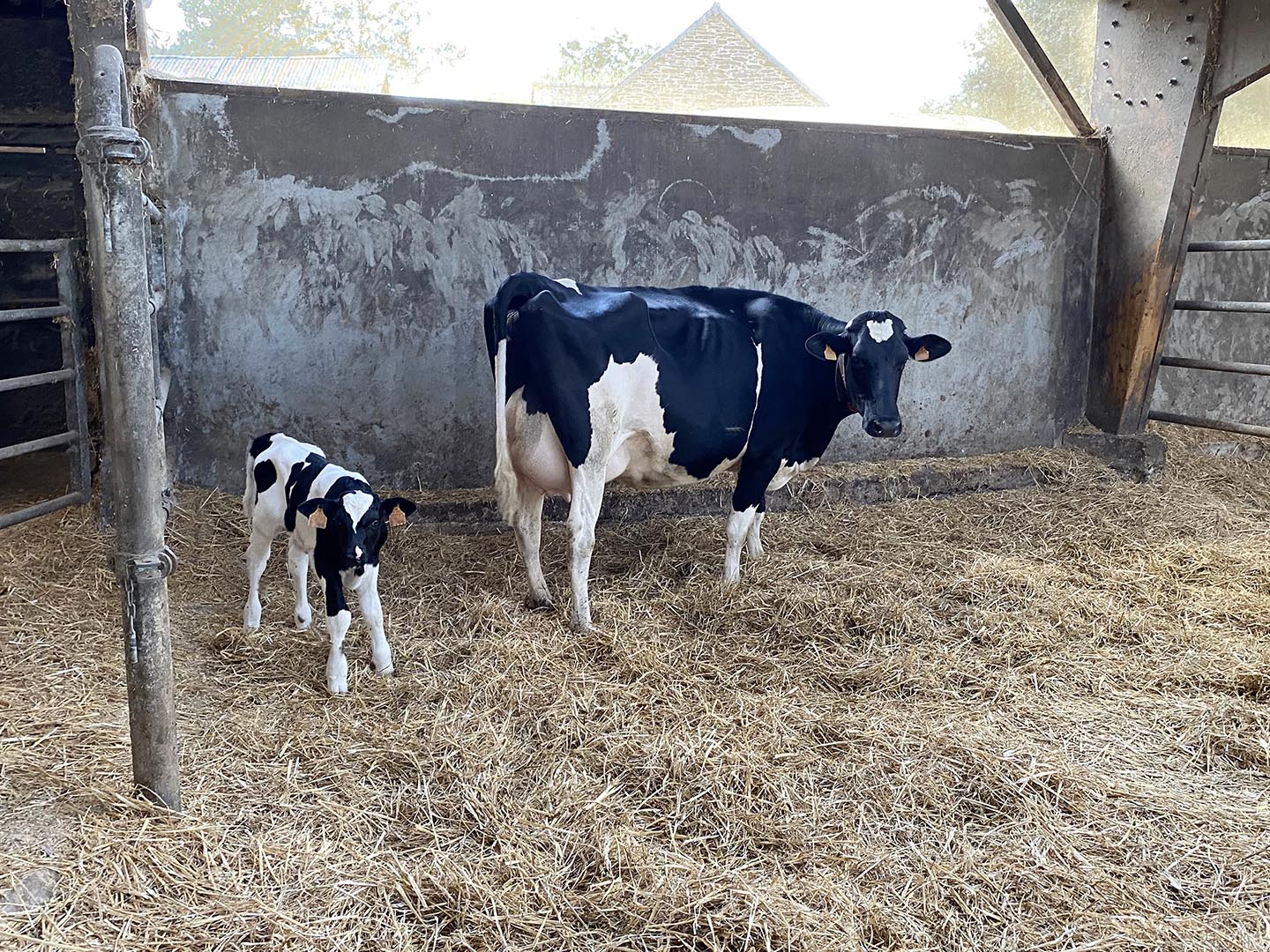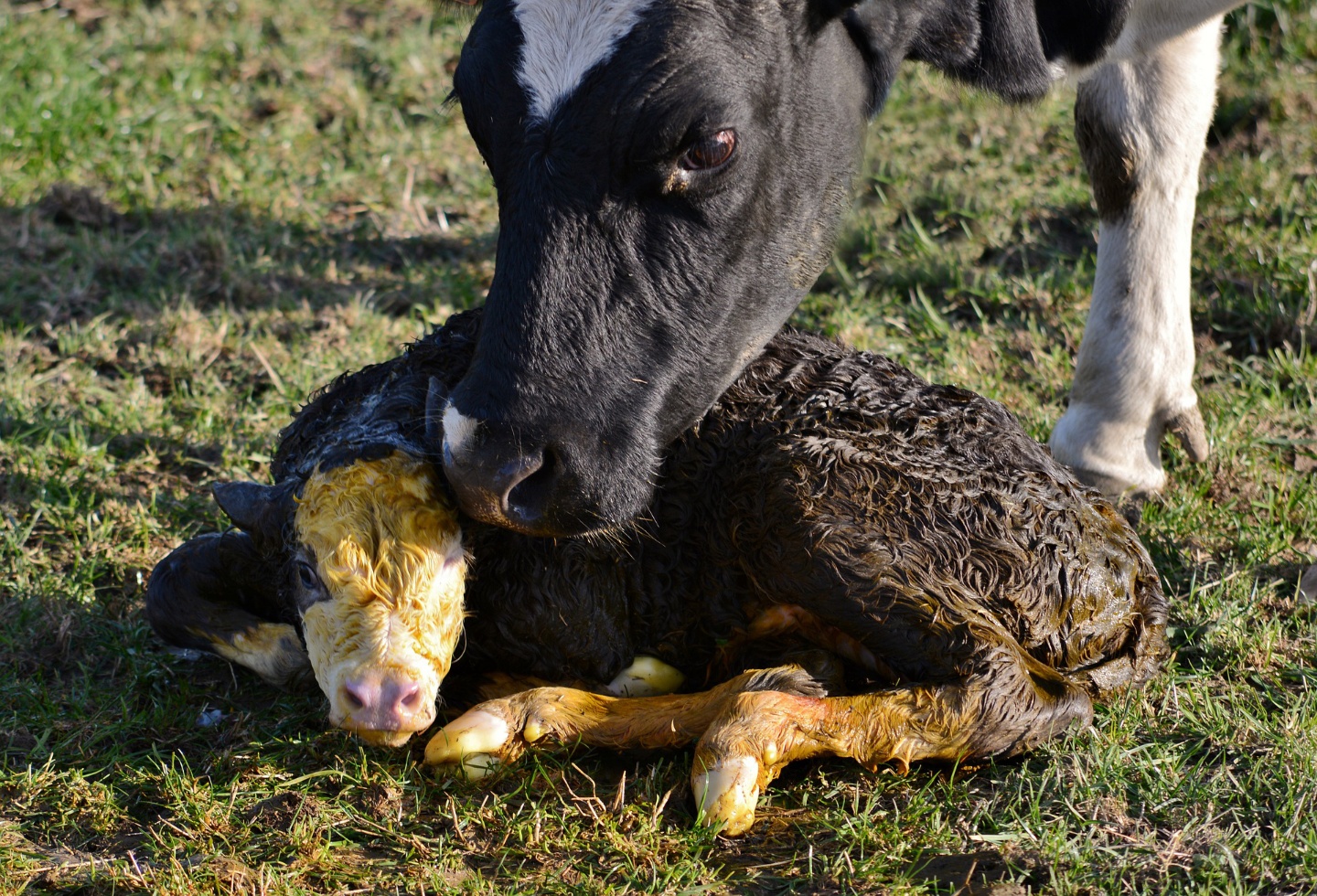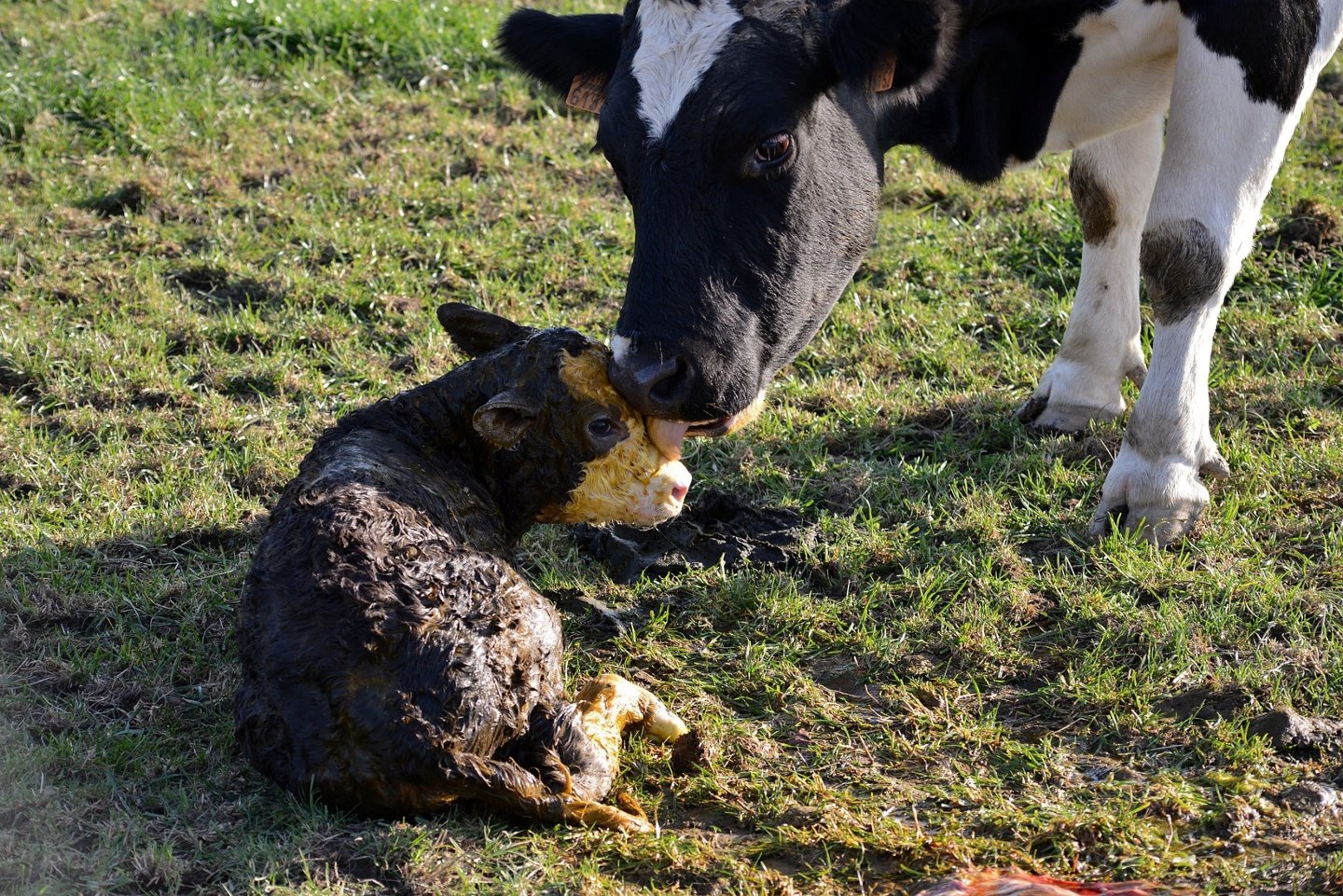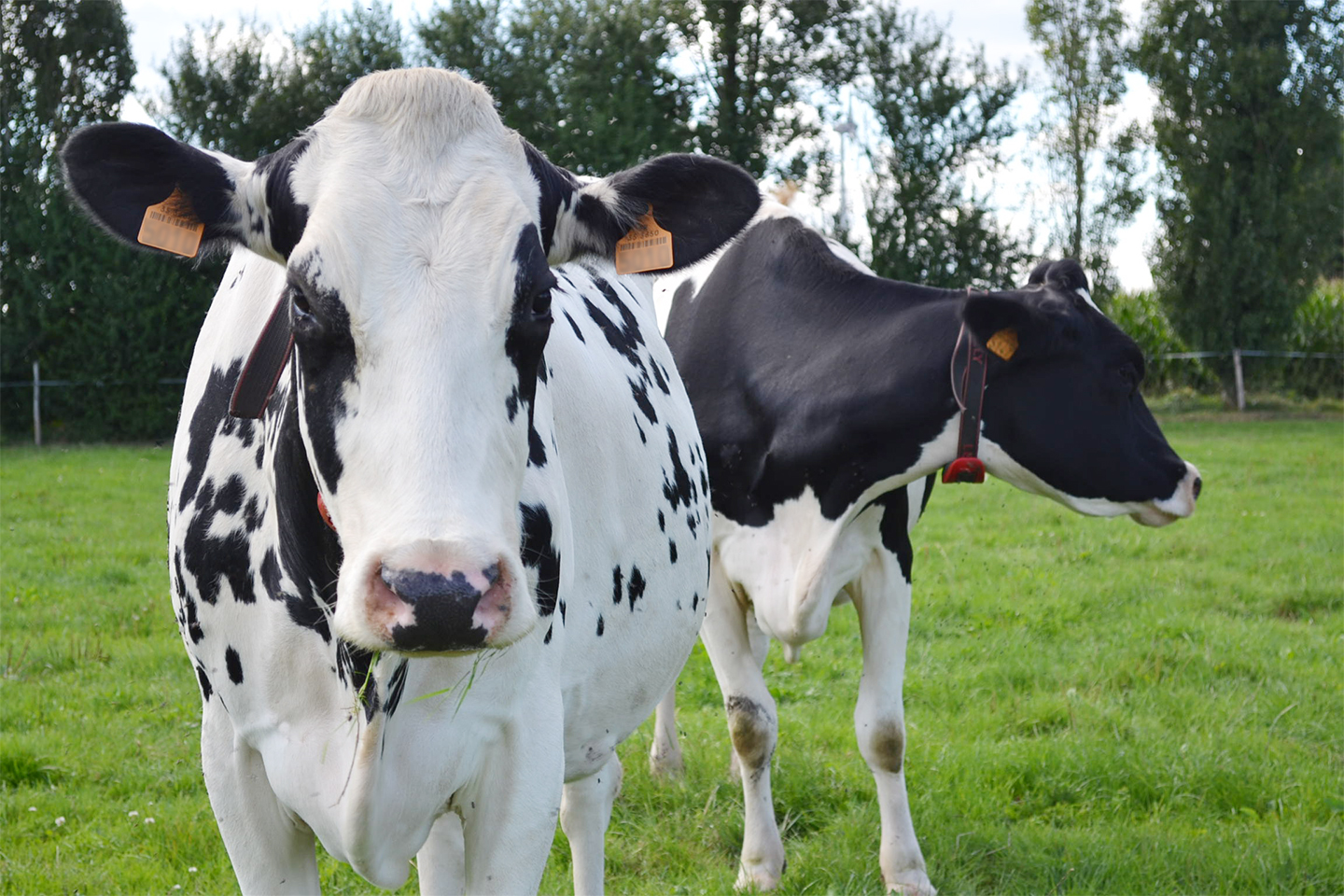
How to detect calvings automatically while staying away from the cows?
Learn more

Detecting signs of impending calving
In the days preceding calving, special attention must be paid to the cow through reinforced surveillance, but which should not disturb the animal.
Two days before calving
In most cases, approximately 48 hours before calving, you will observe a change in the cow's behavior: stress, restlessness, isolation, reduced rumination time. The cow isolates herself from the rest of the herd and carefully observes her surroundings to find a quiet place without the risk of being disturbed by other animals.
Tail swishing, swelling of the vulva (springing), udder with edema are physical signs that also predict imminent calving.
Minutes before calving
A few minutes before calving, the cow will frequently get up and down due to colic pain. Then begins the expulsion stage during which the water bag ruptures and the calf limbs appear.
Despite these visible signs to the naked eye, it is sometimes difficult to identify them, in particular when calving cows are grouped together and/or when the births take place at night time. During this period, when sleep hours are counted, you and the breeders cannot monitor the herd 24 hours a day. To remedy this, automatic calving detection turns out to be a very good solution to remain "permanently but remotely connected" to the herd and to maximize chances of success.
Automatic calving detection with video surveillance
Automatic calving detection proves to be a solution that respects animal welfare, in particular during the calving period. But how does it work?
Cameras to ensure the smooth running of calving?
Using video cameras in the building, this type of technology is able to identify the precise time of calving in a herd or in a stall under surveillance, and to signal it by an alert. This artificial intelligence-based solution relies on a neural network that detects and runs through a great number of criteria established in advance to generate an alert at the time of calving. This alert is then sent to the breeder, technician or veterinarian so that he can decide, through his own analysis, on the action to be taken.

Why automatically detect calving with video surveillance?
As mentioned above, calving are risky periods when it is necessary to combine increased surveillance of the animals concerned while keeping your distance so as not to disturb them. What are the tools available to meet this double challenge?
Video surveillance, an alternative to sensors
Some calving detection methods are widespread, such as sensors, which are based on measuring the cow’s physiological changes in relation to the expulsion of the calf (vaginal temperature, tail position) or on abdominal muscle contractions. If the majority of these sensors have demonstrated their effectiveness, the fact remains that they entail increasingly heavy constraints for breeders and technicians:
- Lack of robustness:
- High cost:
- Unreliability:
- Risky installation:
- Logistics and maintenance:
For their implementation, all these tools therefore require a physical manipulation of the cow before the supposed date of calving.
The current trend favors non-invasive equipment and video surveillance has the advantage of providing remote monitoring with no required handling. The fact remains that rigorous daily monitoring is essential to ensure the smooth running of births.
Calving with maximum supervision and minimum intervention …
In this article on decision-support tools for breeding, Marie Saint-Dizier, veterinarian and professor of animal breeding at the French university of Tours argues that “Tomorrow, we will need tools capable of alerting breeders only when it is really necessary to intervene” …
This is now a reality thanks to new technologies such as artificial intelligence!

Veterinarians in the front row
In the event of an obstructed calving, automatic monitoring is reassuring and can, for example, first alert the veterinarian. He/She can then inform the breeder of any difficulties and be ready to intervene in the event of a complication.
Previously, image-based remote monitoring solutions could not accurately detect and alert in the event of an anomaly. This was before the development of AI, which relies on robust technology and is now able to warn professionals of risks and situations for which it will have been trained. Like the detection of calving in cattle, technologies based on artificial intelligence also make it possible topossible to detect heat but also to assess animal welfare requirements.
In addition, the automatic surveillance of cattle farms by video cameras has many advantages:
- Reassure the breeder - advisor - veterinarian,
- Save precious time in data analysis,
- React at the right time,
- Respect animal rhythm,
- Ensure 24-hour surveillance of several animals at the same time,
- Relieve pressure on breeders and secure surveillance, especially at night.
Dilepix, a startup specializing in artificial intelligence and computer vision, supports players in the agricultural ecosystem (cooperatives, consulting companies, veterinarians, etc.) to jointly define THE solution that will allow them to provide tailor-made personalized advice to breeders.
My project ?
I want to know more about your automatic monitoring solution in cattle breeding



Newsletter subscription
Every month, receive a concentrate of artificial intelligence in your mailbox!
By subscribing to our free newsletter, you will benefit from :
- Our technical contents written by our teams
- Our advice for the use of AI in livestock farming
- Our educational tools to better understand what deep learning is
- Our latest news
- Our events